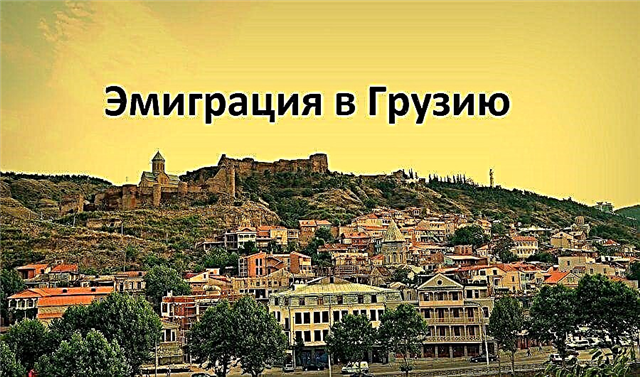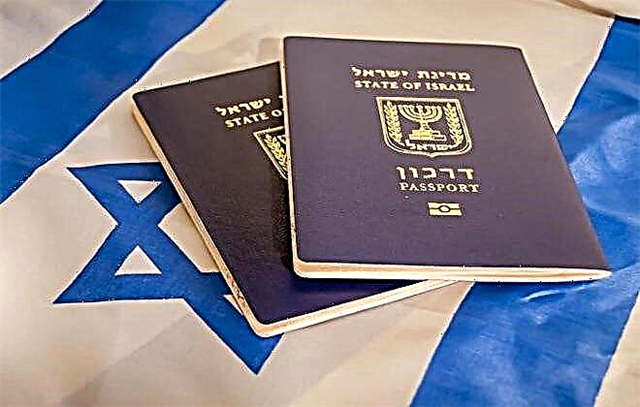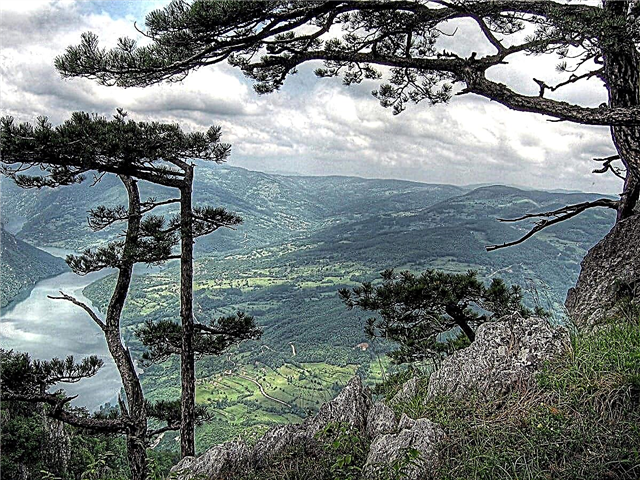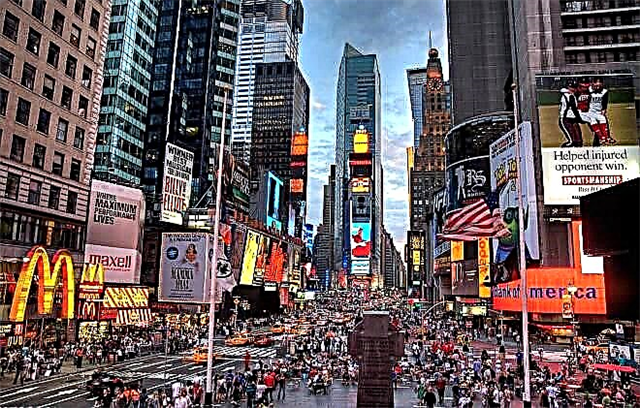The famous Fifth Avenue, Central Park, Rockefeller Center - this is what those who come to one of the most desirable cities in America for the first time, familiar to us from American and Russian films, are eager to see. But for a migrant, very different values are important - where to find housing, how to get a job and organize life in such a way as to spend as little money as possible. Russians in New York have created entire districts with their own internal way of life.

What you need to know about life in New York
New York is a city of skyscrapers and the center of the country's financial life, consisting of five districts:
- Manhattan,
- Brooklyn,
- Bronx,
- Staten Island,
- Queens.
There are many tunnels and bridges between different parts of the city, traffic along which does not stop day or night. Only the Bronx is located on the mainland, all other areas are on the islands.
Life in New York for Russians is not very different from that of other migrants. The main concern is housing and employment. Finding a good quality apartment or room for reasonable money is as difficult as getting a high-paying job. Many people rent housing for several people at once.
There are more features:
- in New York it is very difficult to get used to the fast pace of life, constant traffic flow, a large number of beggars and homeless people;
- here the social stratification of society is acutely felt;
- the city has a huge number of shops that regularly arrange discounts on certain goods. If you follow the promotions, you can save a lot on buying the most essential goods.
- in New York you will have to learn to eat on the go;
- the standard of living in New York is higher than in the whole country, and therefore the budget for a day can exceed $ 100. And renting a separate apartment can cost about $ 2,000 in Brooklyn and about $ 7,000 in Manhattan. For a newcomer, this can seem exorbitant amounts;
- you need to be ready to be idle in traffic jams, to the crowded metro;
- the attitude towards Russians is better here than towards representatives of other nationalities. In any case, when choosing guests for an apartment, they prefer to give it to the Russians.
The high congestion of city streets is the cause of constant noise and smog, which local residents begin to notice only when they leave the countryside.
Russian population
It is impossible to say exactly how many Russians live in New York: many of them do not participate in the population census and do not conclude rental contracts. In addition, if in the 80s and 90s of the last century, Jews and their non-Jewish relatives who fled from Soviet oppression in the United States were called "Russians", then in the early 2000s they began to include all legal migrants from the CIS countries and those who come with nonimmigrant visas hoping to somehow stay.
According to the Census Bureau (Bureau of Statistics), in 2021 the Russian-speaking population in the suburbs of New York is 1.5 million people, in the city itself - about 600 thousand (8% of the total number of people living in the metropolis).
Most of all there are Russians, Ukrainians and Belarusians. Today the metropolis is the first city in the United States in terms of the number of Russian population.
How Russians adapt
 How Russians live in America depends on how quickly they manage to rebuild their mentality, accept local rules and adapt to new conditions. The risk of losing hopes and unjustified expectations is extremely high, but few people are in a hurry to return to their homeland.
How Russians live in America depends on how quickly they manage to rebuild their mentality, accept local rules and adapt to new conditions. The risk of losing hopes and unjustified expectations is extremely high, but few people are in a hurry to return to their homeland.
It is a little easier for those who come from Moscow. Both cities are multinational centers of their states in terms of cultural life, finance, and economy. And you can find any job, the main thing is to withstand competition with those who are of interest to the local labor market.
Jobs that can be taken without formal employment are in little demand in this city. It is more profitable and safer to work in New York legally.
Popular destinations for migrants:
- tourism,
- construction,
- services sector,
- trade,
- transport,
- medicine,
- education.
Those who have education and experience in the field of IT, programming, advertising, finance, know English and can confirm their qualifications, have a good chance of employment in a large company, of which there are thousands.
Renting a house will be the cheapest way away from Manhattan. Food prices here are comparable to those in Moscow. And it is not always more profitable to buy in the market: supermarkets very often arrange a "price collapse" for certain categories of goods.
Not every migrant can afford lunch at a restaurant, but a snack in a cafe costs $ 12-15, in McDonald's - up to $ 10. The Internet will cost about $ 25 for 1 month, another $ 55 needs to be set aside for mobile communications.
There is no concept of “free medicine” in the United States. Locals are served within the limits of their insurance. For everything that it does not cover, you have to pay a lot of money.
Migrants are also better off getting a policy or enrolling in Medicaid, which provides free health care to the poor.
Children of migrants can study in schools where they learn Russian. There is only one such educational institution in New York - Staten Island High Tech. But the competition for admission to it is 10 people per place.
Russian diaspora
In the past decade, descendants of all previous waves of emigration, businessmen opening companies in America, and even artists who come on tour have begun to associate themselves with the Russian-speaking community of the United States.
The Russian community today is divided into several groups:
- students who come to study (most often come from Russia, Ukraine, Belarus, Georgia, Moldova);
- labor migrants who arrived on work visas;
- individuals with outstanding abilities: artists, painters, scientists, athletes, musicians;
- political refugees;
- wives / husbands of American citizens;
- illegal immigrants.
The Russian-speaking population is quite active in social activities. Once a week, the Russian Bazaar edition is published in New York, which even has a website. And in the Russian-speaking neighborhoods you can find a wide range of imported press from Russia: Russian newspapers in New York are in great demand.
It is easy to find “friends” on social networks. For example, on Facebook, you can join the "Russian New York" or "Russians in New York" group. Here you can find out about the events held by the Russian community, get support and lots of useful advice.
The meeting place for the Russian-speaking Orthodox population of the city is St. Nicholas Cathedral (East 97 Street New York). You can find out the news of spiritual life on the website of the Russian Orthodox Church in the United States of America.
Use of the Russian language
 The Russian language in New York is one of the most widely spoken. In general, in the United States, it ranks 10th in popularity. According to the 2021 census, there are about 187 thousand native speakers of the Russian language in the Big Apple.
The Russian language in New York is one of the most widely spoken. In general, in the United States, it ranks 10th in popularity. According to the 2021 census, there are about 187 thousand native speakers of the Russian language in the Big Apple.
In 2009, Russian became one of the official languages in the state of New York. And not only because the largest Russian district in New York is located here, but because 1.2% of the city's total population speaks it.
One of the advantages of giving a language official status is the drafting of documents for the electoral process and in it too.In addition to Russian and English, Chinese, Spanish, Korean, French Creole and Italian are official in New York.
Where is the best place to live in New York for Russians
Brooklyn is the most famous and popular place where Russians live in New York. The first settlers in this part of the country chose the Brighton Beach street for life. It was from here that the Russian community began to grow.
People call Brighton “little Odessa”. The Russian quarters of Sheepshead Bay, Coney Island Street and Kings Highway branch off from it. This is mainly South Brooklyn, which has many benefits:
- proximity to the ocean;
- low prices for food and housing;
- almost the entire population is from the CIS countries.
Brooklyn is famous for Russian restaurants, shops, concert halls and just small companies offering all kinds of service.
Residents of Kazakhstan, Tajikistan and Uzbekistan are concentrated in the Rega Park area in Queens. On Staten Island, there are mainly private houses, there are practically no apartment buildings here. Wealthy Russians are moving here, who have already lived in Brooklyn for some time and now want a more stable and secluded life.
This area is already more like America: a lot of greenery, cozy one-story houses, cleanliness. It's hard to believe that back in the 70s there was a dump on this place. You can get to the mainland from here via the Verrazano Bridge.
Russians are also not uncommon in Manhattan. But mainly wealthy Russians live here. This is considered prestigious, since it is Manhattan that is the concentration of expensive shops, large business centers and beautiful parks.
But there are also cheaper neighborhoods where Russians live. For example, Washington Hayes.
Relatively inexpensive apartments can be found in Soho, Midtown and Chelsea. But you need to look for them, since the demand is very high.
Outcomes
New York has become a place of residence for a large number of Russian-speaking population, which began to move here back in the 80s of the twentieth century. Brooklyn is considered Russian districts, in particular, Brighton Beach Street and the surrounding neighborhoods, as well as Staten Island. A little more than one percent of the population speaks Russian here. On the territory of the city there is a school for the study of the Russian language, kindergartens, restaurants.











